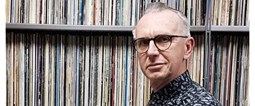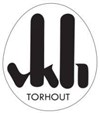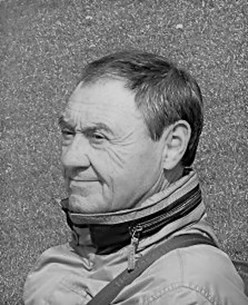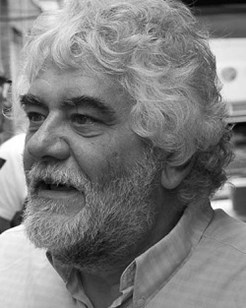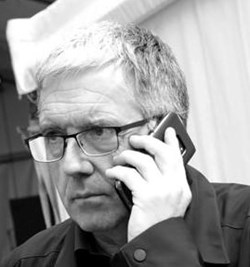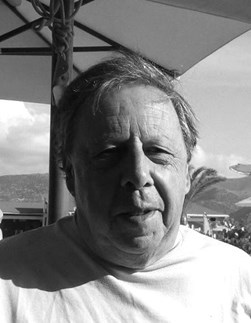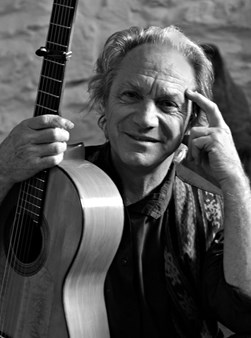Lars Seniuk / New German Art Orchestra: Pendulum
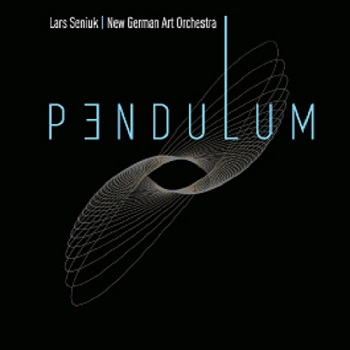
L
Mons Records, MR 874 576
Das mehrfach preisgekrönte New German Art Orchestra, dessen Mitglieder allesamt zur jungen deutschen Jazzelite zählen, gehört zu den besten Big Bands Deutschlands. Unter der Leitung des erst 25-jährigen Komponisten, Dirigenten und Trompeters Lars Seniuk verschmelzen die 17 Musiker zu einem einzigartigen Klangkörper. „Eine Bigband ist wie ein großes Instrument mit unerschöpflichem Klangreichtum für mich, das ich spielen kann. Von fragil bis bombastisch und packend, von schroff bis weich und warm ist alles möglich. Ich liebe es, alles aus diesem Ensemble heraus zu kitzeln!“, so Lars Seniuk. Der Komponist und das Orchester bedingen in vielen Bereichen einander, sind im Wechselspiel Inspiration und Motor: „Zum einen bin ich völlig frei in meinen Kompositionen und Arrangements, denn ich weiß, dass alle Musiker musikalisch und technisch auf höchstem Niveau spielen. So kann ich neue Dinge ausprobieren und sehr anspruchsvolle, schwer zu spielende Passagen schreiben, weil ich weiß, dass die Musiker des NGAO es hervorragend plastisch umsetzen werden. Zum anderen habe ich für jeden Stil den richtigen Solisten in der Band, der perfekt in die jeweilige Komposition hinein passt.“
Hören wir also, wohin das „Pendel“ ausschlägt und wie es klingt: Es beginnt mit einem sehr provokanten Titel „Der Wichsfrosch und sein Adjutant“, bringt uns „Prometheus“ näher, verbleibt in der griechischen Mythenwelt und widmet sich „Narziss“, ehe dann „Freud's Delight“ und zum Schluss „Goldmund“ erklingen. Oder entführt uns die Band etwa zu „Narziss und Goldmund“ von Hermann Hesse?
Saxofonklänge überfluten unser Gehör. Danach finden alle Bläser zusammen, eine Pause und dann … Dabei fragen wir uns, was eigentlich ein Wichsfrosch ist und warum er einen Adjutanten haben muss. Helfen könnte uns nur der junge Tonmeister, der dem Ensemble vorsteht. Doch hören wir weiter zu, lauschen wir Finn Wiesner bei seinem Solopart auf dem Tenorsaxofon. Das ist leider viel zu kurz, denn schon sind alle Bläser wieder im Einsatz, bei denen hier und da die Trompeten ihre schrillen Stimmen hören lassen. Nach einem Intermezzo kommt Wiesner zurück und nimmt uns auf seiner Klangwolke mit. Nicht zu überhören ist jedoch der eingängige Sound einer Big Band, auch wenn Lars Seniuk Regie führt. Sind es nicht die Posaunen, die uns anfänglich „Prometheus“ näherbringen? Alsbald sind auch die Trompeten präsent, von denen es vier in der Band gibt. Stimmen alle Bläser ein, dann hat man den Eindruck, dass Aufgeregtheit vorherrscht. Für wenige Momente darf sich die Rhythmusgruppe ihren Platz erobern, ehe erneut die Bläser das Zepter in die Hand bekommen und von Chaos und Aufruhr erzählen. Schließlich löst sich Stephan Meinberg aus dem „Tumult“ und lässt seine Trompete im Solo erklingen. Die Grundstimmung, die Aufruhr, Aufregung und Wirrwarr nahelegt, setzt sich gleichbleibend fort. Nur für wenige Momente scheint sich ein wenig Beruhigung einzustellen.
Der selbstverliebte Narziss tritt gleichfalls musikalisch auf dem Album in Erscheinung. Doch welches Instrument bringt uns den Narziss näher? Das Altsaxofon, das Philipp Gerschlauer spielt? Die Sequenz, die Gerschlauer spielt, macht schon etwas her. Sie ist dramatisch konzipiert und drängt die übrigen Bläser mehr und mehr in den Hintergrund. Doch sie verstummen nicht gänzlich, sondern scheinen weniger auf Dialog als auf Konfrontation aus. Schließlich scheint es so, als ob das Altsaxofon sich nicht aus der Mitte des Geschehens verdrängen lässt.
Hören wir doch mal anschließend, worin „Freuds Vergnügen“ besteht. Moment mal! Heißt das letzte Stück der aktuellen Einspielung nicht „Goldmund“? Richtig! Zuvor gab es schon „Narziss“ zu hören. Das legt ja den Schluss nahe, Hermann Hesse hätte mit seiner Erzählung „Narziss und Goldmund“ irgendwie Pate für diese beiden Kompositionen gestanden. Worum geht es dabei? Die Geschichte spielt in der fiktiven mittelalterlichen Klosterschule Mariabronn (Beschreibungen Hesses deuten jedoch klar und deutlich aufs heutige Weltkulturerbe Kloster Maulbronn!!). Hier entwickelt sich eine Freundschaft des Novizen Narziss mit dem Schüler Goldmund. Narziss ist Lehrgehilfe in der Schule, als der gut aussehende und kluge Jüngling Goldmund von seinem Vater als Schüler ins Kloster gebracht wird. Es geht aber auch bei Hesse um Vollkommenheit und Vervollkommnung, also etwas, was auch eine Band wie das New German Art Orchestra stets zu erreichen versucht. Denn: Jedes Stück dieser Großformation ist der Versuch, aus musikalischen Elementen das Ganze in harmonischer Weise zu gestalten.
Text: © ferdinand dupuis-panther
Presse release by Mons Records
The multi-award winning New German Art Orchestra, whose members all belong to the young German jazz elite, is one of the best big bands in Germany. Under the direction of 25 year-old composer, conductor and trumpet player Lars Seniuk. The musicians, all of whom bring their own individual sound to the ensemble, blend together into a homogeneous and unique orchestra that interprets a varied repertoire, from classic big band music to avant-garde soundscapes. "For me, a big band is like a large instrument, with an inexhaustible wealth of sound, that I can play. From delicate to bombastic and gripping, from rugged to soft and warm; everything is possible. I love tickling everything out of this ensemble!" said Lars Seniuk. The young bandleader and composer Lars Seniuk is considered both a high-flyer and an exceptional talent within the German jazz scene. With his outstanding musicality, he knows how to play all the "keys" of a big band like the New German Art Orchestra, and pulls out all the stops when making use of this great ensemble. Lars Seniuk makes the most of the rich colours and versatility within this extraordinary band, and he loves the contrasts. He explores new and abrupt sounds, stretches the tonality to its limits, only to immediately gather everything together into an absolute, almost minimalist tranquility; an immersion into introverted, melancholy and wonderfully delicate soundscapes. The composer and the orchestra require each other in many ways; they are a mutual inspiration and motor. "On the one hand, I am completely free in my compositions and arrangements because I know that all of the musicians play at the highest level, both musically and technically. I can try new things and write very demanding, difficult-toplay passages, because I know that the musicians of the NGAO will realise it vividly and perfectly. On the other hand, I have the right soloists in the band who will fit perfectly into any particular composition. And because of that, I can write some tailor-made pieces for the soloists" said Lars Seniuk. With the current release Pendulum, Seniuk and the New German Art Orchestra again demonstrate the homogeneity and veritable elasticity of their interpretations, as well as their love of highly complex themes. Pendulum is the musical essence of a debate around an existential and philosophical range of topics. Questions on happiness and the reasons for it all, the connections between the cause and the objective underlying it. Man as a causal organism. The pendulum works as a valid symbol for this causality. The state of happiness is experienced fleetingly, and can only be relived through constant movement and continual development. Only within the brief moments balanced between searching and finding does that crystalline state of happiness become perceptible to us. Exactly like a pendulum; it does not remain stoically at its point of rest, but rather moves around it. It is in constant motion, exploring extremes in its amplitude, only to return to its opposite position. Through this constant movement, balance arises. For Lars Seniuk, the principles of the pendulum, the multiplicity and diversity as well as the balance resulting from these dissimilitudes and extremes, are ubiquitous. They are, on many levels, a part of his view of life. His music is an expression and reflection of this: "Constant progress is important for me. To respect traditions yet to always keep writing is a central theme. In addition, the presence of two opposites, the contradictions, the extremes, are for me the starting point and basis of all balance; also, or especially, in music. My compositions on Pendulum draw on it." The amalgamation of cognition and intuition, intellect and sensibility (Narcissus and Goldmund), super-ego, ego and the id (Freud's Delight), complexity (Perceptions of Reality) and melancholic simplicity (The End Of Something Special), as well asprogression (Prometheus) and lived and expanded tradition (Goldmund) are thephilosophical templates for a brilliant and yet finely engraved orchestral sound. A captivating listening experience that perfectly combines modern big band jazz with influences from contemporary music and the jazz tradition.
Informationen
Label
Mons Records LC 06458
www.monsrecords.de
Musiker
Lars Seniuk | New German Art Orchestra
www.newgermanartorchestra.de
www.larsseniuk.de

